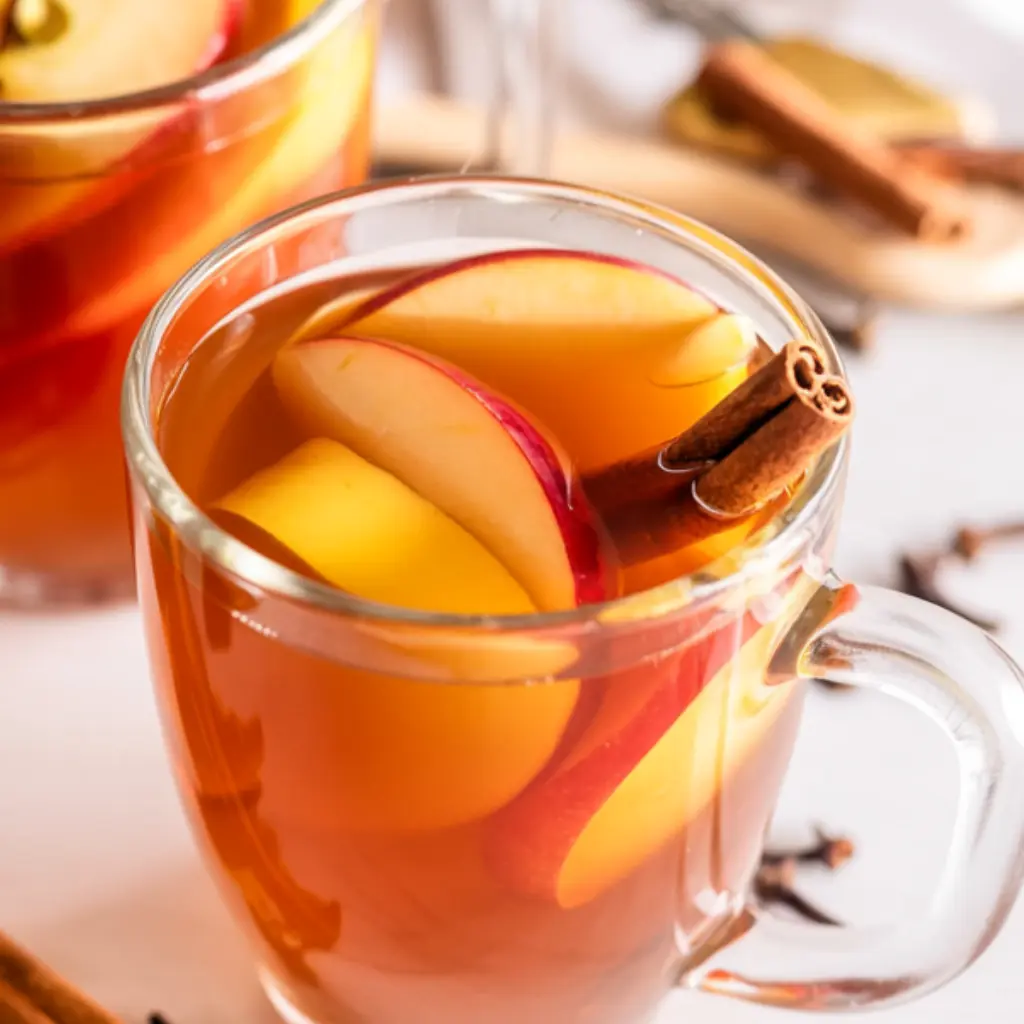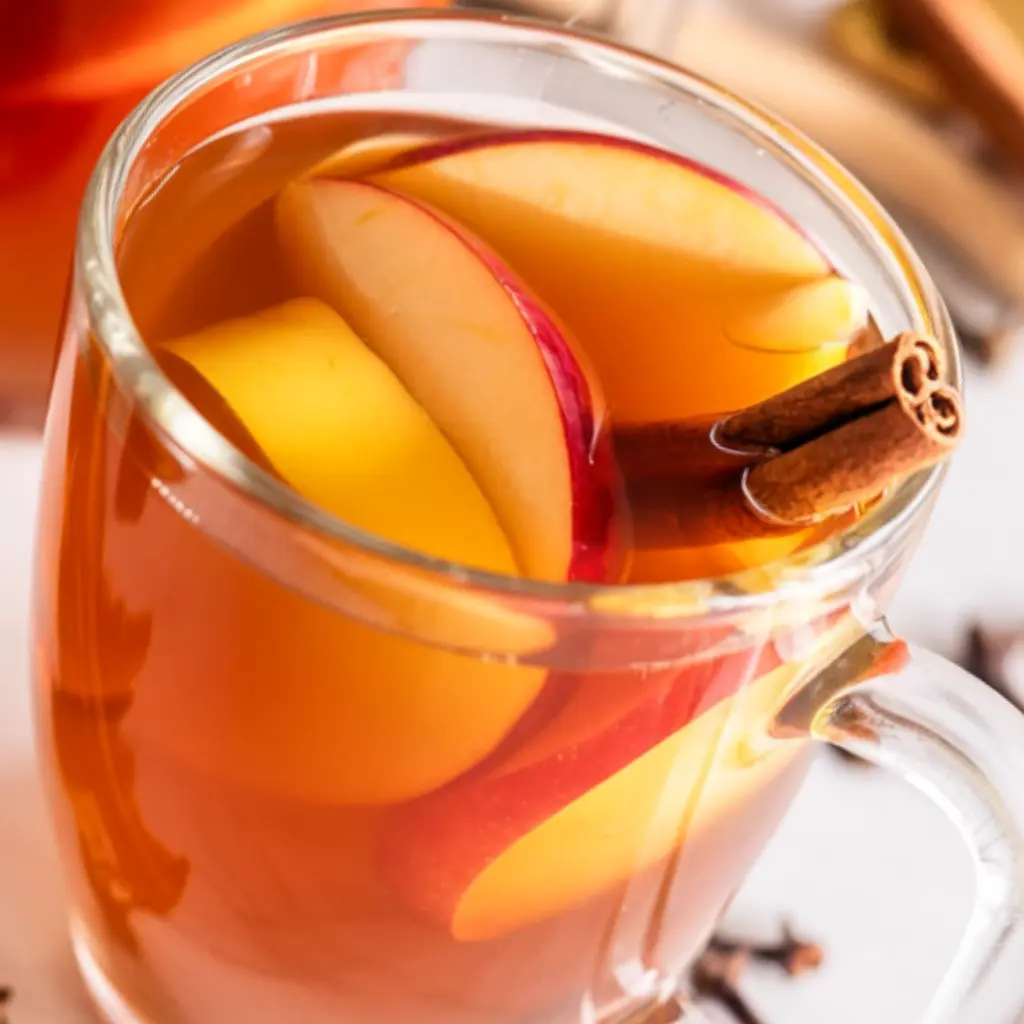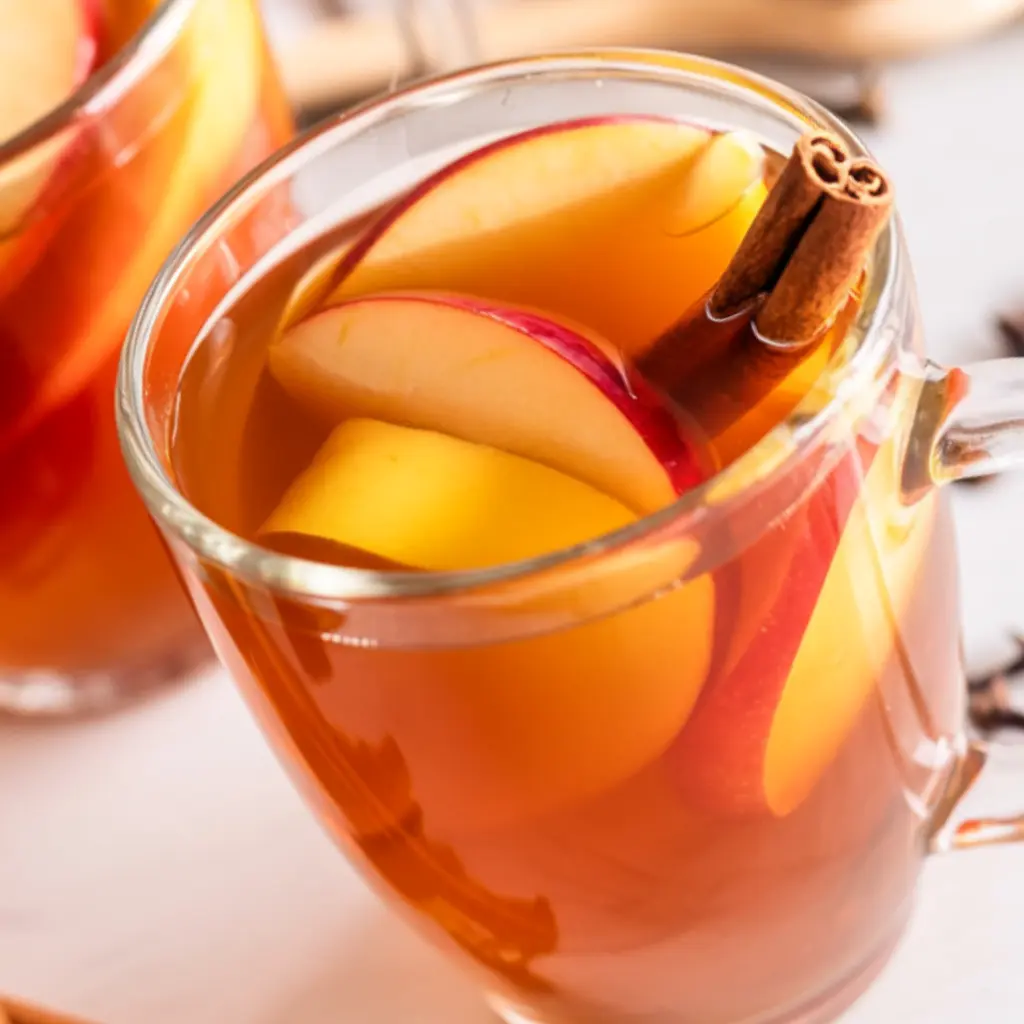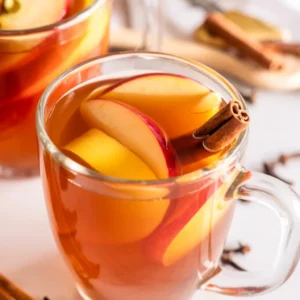I can still remember the first time I made apple cider from scratch. It was one of those crisp autumn afternoons when the air smelled faintly of wood smoke, and I had a basket of apples sitting on the counter, more than my family could possibly eat before they softened. I hated the thought of them going to waste, so I set about simmering them down into cider. I’ll be honest—I didn’t get it right that first time. I rushed the process, used too much sugar, and ended up with something that tasted more like overly sweet juice than the cozy, spiced drink I had envisioned. But with each attempt, I learned. I discovered that patience is the key—that letting apples simmer low and slow allows their natural sweetness to shine, and that the right blend of spices can transform something simple into a cup that feels like a hug. Over the years, this cider has become a family tradition. Every fall, I make a big pot, and the aroma alone has a way of drawing everyone into the kitchen.

Why You’ll Love This Recipe
- Easy to prepare with simple ingredients
- Budget-friendly, especially if you have an abundance of apples
- Naturally sweet and full of comforting fall flavors
- Perfect for gatherings or quiet evenings at home
- Can be enjoyed warm or chilled
Ingredients You’ll Need
Apples: The heart of this recipe, and where all the flavor begins. I like to use a mix of varieties—something sweet like Gala or Fuji paired with something tart like Granny Smith. The blend gives the cider a rounded flavor that isn’t one-dimensional. If you only have one type of apple on hand, don’t worry; it will still turn out beautifully.
Oranges: A couple of oranges add brightness and balance the apples’ sweetness. I slice them into rounds, peel and all, which brings a gentle bitterness that keeps the cider from tasting cloying.
Cinnamon Sticks: These are non-negotiable for me. They infuse the cider with warmth, and I always prefer whole sticks over ground cinnamon, which can leave the cider cloudy.
Cloves and Allspice: Just a few of each go a long way. Too many and you’ll overwhelm the apples, so I tuck them into the orange slices to keep them contained and easy to remove later.
Brown Sugar: I usually add a little, but not too much. The apples carry plenty of natural sweetness, so I start with a couple tablespoons and taste as it simmers. You can always add more later, but you can’t take it out once it’s in. I’ve also used maple syrup when I was out of brown sugar, and it added a lovely depth.
Water: Enough to cover the apples in the pot. Don’t skimp on this; the apples will cook down and release their juices, but the water ensures there’s plenty of liquid for straining.
How to Make It (Step-by-Step Instructions)
First, I wash the apples well. Since I use the peels, I don’t want any wax or dirt sneaking into the pot. Then I quarter them—no need to core or peel. Everything goes in, seeds and all, because it will all be strained out later. That’s one of the things I love about this recipe: it’s rustic, unfussy, and forgiving.
Next, I layer in the orange slices and tuck the cinnamon sticks, cloves, and allspice around the fruit. I cover everything with water, leaving an inch or so at the top so the pot doesn’t bubble over as it simmers.
I bring it to a boil, then immediately lower the heat to a gentle simmer. This part is important—too much heat and the apples break down harshly, giving the cider a slightly bitter edge. I let it simmer uncovered for about two hours, giving it a stir now and then. The house fills with the most inviting aroma, which is honestly half the joy of making it.
Once the apples are very soft, I take a potato masher and carefully press them down to release even more flavor. Then I let it cook another hour, uncovered, to deepen and concentrate the liquid.
When it’s ready, I strain it through a fine mesh sieve, pressing on the solids to get every last drop. The cider will be cloudy but smooth, just as it should be. I taste it while it’s warm and decide if it needs a touch more sweetness. Sometimes it does, sometimes it doesn’t. That’s the beauty of homemade—it’s always flexible and tailored to you.

Expert Tips for the Best Results
Over the years, I’ve learned that the best cider comes from restraint. It’s tempting to throw in every spice in the cabinet, but the apples should remain the star. A balanced mix of apple varieties makes the flavor complex, while slow simmering develops richness without bitterness. Always taste before adding sugar; some batches need very little, and you don’t want to mask the natural sweetness. And finally, don’t rush the straining. Press gently and let the cider drip through for the smoothest texture—you’ll be rewarded with a clean, rich flavor that feels homemade in the best way.
Variations & Substitutions
I’ve had times when I didn’t have oranges, so I used a splash of lemon juice instead, and it gave the cider a lighter, fresher flavor. Once, on a chilly evening, I stirred in a drizzle of maple syrup at the very end, and it lent a cozy, woodsy note that was delightful. If you like things spicier, a slice of fresh ginger works beautifully, adding a gentle heat that warms you from the inside. And while this recipe is non-alcoholic, I’ve been known to add a splash of bourbon or rum for the adults on special occasions, which makes it feel like a true winter treat.
Serving Suggestions
I usually serve apple cider steaming hot in big mugs, especially after coming inside from raking leaves or a walk in the chilly air. It pairs beautifully with baked goods—think pumpkin bread, cinnamon rolls, or even a simple butter cookie. On holiday mornings, I sometimes set out a slow cooker full of cider so guests can help themselves throughout the day. And when I have leftover cider, I chill it in the fridge and serve it cold over ice with a squeeze of lemon—it transforms into a refreshing drink that tastes completely different but equally satisfying.
Storage & Reheating Instructions
Homemade cider keeps well in the fridge for about a week, stored in a tightly sealed jar or pitcher. It tends to thicken slightly and the spices mellow as it sits, which I find makes it even better after a day or two. To reheat, I simply warm it gently on the stove—never boiling—until it’s just hot enough to sip. Microwaving works too, but take care not to overheat it, or the flavor can flatten. If you want to keep it longer, cider freezes beautifully. I pour it into freezer-safe jars, leaving some space at the top for expansion, and thaw it in the fridge overnight whenever the craving strikes.
Recipe FAQs (Answered by Clara)
Can I make this ahead of time?
You sure can. In fact, I think the flavor deepens after a night in the fridge. I often make a big batch the day before a gathering and just reheat it when company arrives.
Do I need to peel or core the apples?
No, and that’s one of the best parts. The peels and cores add flavor, and everything gets strained out in the end, saving you extra work.
What if I don’t have whole spices?
You can use ground spices in a pinch, but the cider will be a little cloudy and might have some grit at the bottom. If that doesn’t bother you, just strain carefully and enjoy.
Can I make this in a slow cooker?
Absolutely. Just put everything in the slow cooker, cover with water, and cook on low for 6–8 hours. It’s a great way to keep your stovetop free and your house smelling incredible all day.

Conclusion
Homemade apple cider is one of those recipes that reminds me why I fell in love with cooking in the first place. It’s simple, comforting, and deeply rewarding—not just because of how it tastes, but because of how it fills a home with warmth and togetherness. If you give this recipe a try, I’d love to hear how it turned out for you. Share your version, leave a note, or simply enjoy a quiet cup on a chilly day. After all, cooking isn’t just about following steps; it’s about creating little traditions that bring comfort year after year.
Nutrition Information (per 1-cup serving, approximate)
Calories: 120
Carbohydrates: 30g
Sugar: 25g
Fiber: 2g
Vitamin C: 8% DV

Apple Cider
Ingredients
- 10 –12 medium apples a mix of sweet and tart varieties, quartered
- 1 orange quartered (optional, for extra flavor)
- 4 cinnamon sticks
- 1 tbsp whole cloves
- 1 tbsp allspice berries optional
- 8 cups water
- ½ –1 cup brown sugar adjust to taste
Instructions
- Prepare fruit & spices: Place apples, orange, cinnamon sticks, cloves, and allspice in a large pot.
- Add water: Pour in water until ingredients are covered (about 8 cups).
- Simmer: Bring to a boil, then reduce heat and simmer uncovered for about 2 hours.
- Mash & strain: Mash softened apples and orange with a potato masher. Strain liquid through a fine-mesh sieve or cheesecloth into another pot. Discard solids.
- Sweeten: Stir in brown sugar to taste while cider is still warm.
- Serve: Enjoy hot, or let cool and refrigerate for a chilled version.
Notes
- For a stronger spiced flavor, simmer an additional 30 minutes before straining.
- Make it in a slow cooker: cook on LOW for 6–7 hours or HIGH for 3–4 hours.
- Can be spiked with rum, bourbon, or brandy for an adult holiday version.
- Store in the refrigerator up to 1 week or freeze for up to 3 months.

